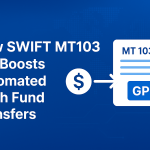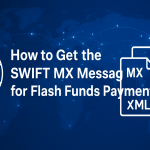Swift message types (MT) and formats explained will teach you how banks and including other financial institutions communicate to each other through the SWIFT (Society ) network system.
The swift network started for sending simple payment instructions The Society for Worldwide Interbank Financial Telecommunication, or SWIFT, is a messaging network that enables banks and financial institutions worldwide to send and receive information about financial transactions securely and reliably.
Within SWIFT, each message type, referred to as MT, plays a unique role. Curious to know how each of these message types operates? Let’s dive into the world of SWIFT message types and uncover their importance in financial transactions!
What is Swiftnet message type?
SWIFT message types are the format or schema used to send messages to financial institutions on the SWIFT network.
The original message types were developed by SWIFT and a subset was retrospectively made into an ISO standard, ISO 15022.
It is only practiced within the system only member banks within the swift network can communicate between each other using message types
Swift Message Types (MT) and Formats Explained:
Messaging types are swift automated codes used in transmitting communication between one end to another within a banking system.
Messaging types are represented by 3 digits number that signifies the type of response that is to be rendered for a particular request.
Banks and financial institutions make use of messaging types for everyday for transaction observations and execution.
This is followed by a three-digit number that denotes the message category, group and type.
Created and Maintained standards by swift.

Swift Message Types (MT) and Formats Explained | RatnyxCyber.ru.
* Swift messaging type format:
SWIFT messaging formats are used for secure financial communication between institutions. They are categorized into different message types, each serving a specific purpose.
Here are key categories:
MT1xx – Customer Payments and Cheques (e.g., MT103 for single customer credit transfers)
MT2xx – Financial Institution Transfers (e.g., MT202 for general financial institution transfers)
MT3xx – Treasury Markets (e.g., MT304 for foreign exchange deals)
MT4xx – Collection and Cash Letters
MT5xx – Securities Markets
MT6xx – Treasury Markets – Metals and Syndications
MT7xx – Documentary Credits and Guarantees
MT8xx – Traveller’s Cheques
MT9xx – Cash Management and Customer Status
SWIFT messages consist of five blocks of data including three headers, message content, and a trailer. Message types are crucial to identifying content.
All SWIFT messages include the literal “MT” (message type/text[2]).
* Swift MX standard – ISO 20022
While a classic and reliable communication means, the Swift MT standard is considered outdated.
It’s being replaced by a superior Swift MX standard or ISO 20022 Swift MX standard.
ISO 20022 is the most up-to-date message standard for all financial industry players.
Based on the XML protocol, it’s a flexible and scalable message type that allows businesses to work with a much wider range of data types and transfer it a lot more efficiently.
Key Swift MX/ISO 20022 benefits XML-based allows to work on multiple networks and process data faster and more efficiently.
Multilingual support for non-Latin alphabets Data-rich messages for enhanced data mining and reconciliation regulatory compliance for easier regulatory compliance and reporting Enhanced reconciliation enables automatic reconciliation between invoices and payments.
Who can use Swiftnet?
SWIFT is utilized worldwide, with approximately 60% of all cross-border transactions processed in USD. Despite this, some outlier countries are attempting to establish their own systems, such as (China’s CIPS and Russia’s SPFS.)
Swift is under the stewardship of central banks from the Group of Ten (G10) and the European Union. Its governance structure comprises a board of 25 directors, who are elected by Swift’s shareholders.
This board is responsible for the governance and supervisory management of the Swift network, ensuring its smooth and secure operations across the global financial landscape.
Swift Network Function and Codes:
The SWIFT network is a secure messaging system used by financial institutions worldwide to facilitate international transactions.
It does not transfer money itself but enables banks to send standardized messages for payment instructions.
Functions of the SWIFT Network
- Secure Messaging: Provides a standardized way for banks to communicate financial transactions.
- Global Connectivity: Links thousands of financial institutions across different countries.
- Transaction Verification: Ensures accuracy and security in cross-border payments.
- Standardized Codes: Uses unique SWIFT codes to identify banks and branches.
SWIFT Codes
A SWIFT code, also known as a BIC (Bank Identifier Code), is an 8 to 11-character code that identifies a specific bank and branch. It consists of:
- Bank Code (4 letters) – Identifies the financial institution.
- Country Code (2 letters) – Represents the country of the bank.
- Location Code (2 characters) – Specifies the city or region.
- Branch Code (optional, 3 characters) – Identifies a specific branch.
These codes are essential for international wire transfers, SEPA payments, and other cross-border transactions.
SWIFT influence on RATNYXCYBER:
As a secret service originated from the shores of the Russian federation, swift network system has a high impact influence on some of the operational services rendered by the RatnyxCyber forum.
Check out this post and find out all you need to know About RATNYXCYBER
While SPFS is the parent network for distributing data to some other institutions in countries like, Poland, Bulgaria, India, Hungary, Turkiye the Swiftnet extends further into the western union and Australia geographic areas.
The swift network system uses it longevity to deliver a more fast and secure payment messages than some other networks except for the SPFS.
Where Swift Network and SPFS comes in:
clearing houses always take instructions from institutes that are in charge of credit and debit on customers account situated at any bank with the help of the message type format that’s is used in transcripting message.
The MT103 and MT202 has been the most used for flash funds credit for customers to use the RatnyxCyber tool for flash funds transfers or wire bank transfer.
Learn more about the flash funds payment.
By that note receiver are guaranteed with full success to be credited, as the conversion are done and carried out promptly without no mistakes or delays from the system.
Our contact center is fully available and open to hearing your thoughts including settling your demands. Feel free to contact us here.



